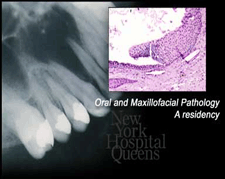المقالات
Lateral Periodontal Abscess

A lateral periodontal abscess is a result of rapidly-growing bacteria within a periodontal pocket. A periodontal pocket forms in the presence of periodontal disease, as the gums become infected and pull away from the surface of the teeth. This deepens the sulcus - the space between the teeth and gums - to a space greater than three millimeters. The deepened sulcus is called a pocket.
An abscess forms when the pocket deepens to the point that plaque bacteria, tartar and/or food become trapped within it, and the body's immune system cannot adequately combat the infection. A large swelling develops on the gums as a result of this uncontrolled, rapid growth of bacteria, bacterial products and infected gum tissue. As a result, what occurs is a fast, painful destruction of the supporting connective tissue and bone that surround the tooth.
Lateral periodontal abscesses form anywhere along the side of the gums where the periodontal sulcus has deepened to become a pocket. They are common in cases of advanced periodontal disease, when bone loss has occurred as a result of the infection, because the pocket depth of five millimeters or more creates an ideal environment for abscess formation. Abscesses can be very painful, tender lesions that often appear suddenly. Even small abscesses can produce a great deal of pain. Abscesses are most common in those 40 years old and above, but occasionally occur in children.
Lateral periodontal abscesses are smooth to the touch and range in diameter from two to ten centimeters. In some cases, they form as a result of an immune system disorder or deficiency, or uncontrolled diabetes.
ligaments and bone, ultimately causing you to lose the tooth.
* The primary goal of treatment is to drain the infection; we usually accomplish this by carefully scraping the pocket lining.
* We then remove the plaque and calculus adhering to the root surface with scaling and root planing; this hopefully prevents a recurrence of the infection.
* Antibiotics may be helpful in eradicating the infection.
* We usually prescribe pain medications to alleviate the discomfort associated with the abscess.
* Once the abscess has healed, we recommend guided tissuere generation and/or osseous surgery; without this definitive treatment, you are inviting future recurrence of the abscess.
